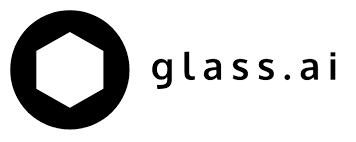50 words for snow - improving B2B accounts retention and upsell with personalized business research at scale.
The widely shared linguistic phenomenon that the Inuit people have many different words for snow can be traced back to anthropologist Franz Boas, who experienced Inuit life during his postgraduate studies in the 1880s and commented in letters on the variety of terms that they had for snow. He never researched or quantified the statement, but this brief comment led to the ‘Eskimo snow myth’. De-bunked by various researchers over the years, in 2013 anthropologist Igor Krupnik published a new study that looked at the vocabulary of various Inuit dialects and claimed that Boas was in fact correct, and there were over 50 different words that describe snowy conditions. The controversy rumbles on.
What has the number of words for snow got to do with B2B customer retention and growth? Like the Inuits who need the right language to precisely describe the conditions they are living in, every company has their own unique view of the markets they operate in, how they fit into them and the best way to connect with new and existing customers within those markets. For example, LinkedIn uses an industry taxonomy to classify companies into over 100 different high-level sectors, within this taxonomy they have 3 sectors related to the Construction, Civil Engineering and Architecture markets. This is fine for most purposes, however, if you are involved in these markets then you need a much more fine-grained view of the companies in it. You’d be interested in distinguishing between road builders and house builders, building contractors vs. property developers, property developers who sell vs. rent their properties, the possibilities go on. Pretty soon you have 100s of ways of describing and categorising the market. The problem is how do you understand which sort of businesses you are speaking to?
By their very nature, these unique — personalized — views of markets and accounts will not be covered in any traditional industry classification or be addressable using off-the-shelf sales intelligence tools. If you are very well organised then maybe you are keeping your CRM up to date and recording this information as you go. Unfortunately despite their promise, CRMs are often good repositories for operational data (e.g. contact info) but rarely contain this sort of useful strategic information.
The rich data that is needed to understand these detailed and unique industry segmentations do exist. You’ll find it on the open web. However, if you want to use the data online to understand and classify companies into a perspective that makes the most sense to your business, then you are likely to need to spend hours if not days in Google carefully crafting queries and looking through large numbers of results until you have collated sufficient results to start the categorisation process — ignoring the complexity of categorisation process itself. This might be fine for a handful of clients. What if you need to build a sales campaign or marketing strategy for 1000s of new leads or existing clients? Forget it!
At glass.ai we have built web-scale language-understanding technology to read social media, news and the websites of millions of companies worldwide. As it crawls the web, the glass.ai engine is trying to behave like a human would as they research a topic or area of interest — although at a much larger scale, 24 hours a day. Using this platform together with a comprehensive topic ontology we are able to classify companies at both a high and very granular level of understanding of the activities they each perform. Using this deep multi-dimensional view of businesses within the economy allows different —unique to you — business segments to be investigated.
Furthermore, not only is it able to build a static taxonomy of the businesses that you are interested in but it can combine that with signals such as funding, office openings, and industry awards, to further improve your understanding of leads and clients. This can improve your ongoing customer conversations which are key to B2B customer retention, up-selling and effective account-based marketing (ABM).

